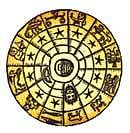But, what intrigued me were the dates I read, splashed across every historical monument. The question that popped up in my head was — how did man organise time into dates? Why do we call a calendar so?
This fascinating story of past, present and continuous future, begins in ancient Egypt, treads through various civilisations, withstands many political deviations within them and after a period of sustenance, finally settles along a stable course in 1582.
It all began in Egypt. The Egyptians with their advanced knowledge in astronomy had already yielded the ‘Sothic’ year on the basis of their calculation that the earth took 365.25636 days to complete one revolution around the Sun. This solar calendar constituted just over 365¼ days had 12 months of 30 days each. But a round figure like that, left 5.25 days less than the deduced revolutionary period. So, they simply added five days every year, and one extra day every four years!
Now, consider the proof of the system’s precision. The ruins of the Temple of Ramses II stand to this day at Abu Simbel. The statue of Ramses is placed among others, 180 ft away from the only opening to the shrine. For more than 3200 years, this statue has been illuminated by the Sun on February 22, every single year. If the minute difference of 0.00636 days per year (365.25636 - 365.25) had not been accounted for, over the 3200 years, this date would have changed from the original, many years ago, by 20 days!
Still thinking? So were some others. Because even now, this placement did not fully align with an actual year. More exactitude followed with the Greeks and their concept of a leap year, adding a day to the shortest month, every four years.
But when Julius Caesar, during his rule in Egypt, re-structured the calendar, he had to reinforce the well-verified, but lost-in-time, Greek ‘leap of day’. The consequences of this re-formulation were substantial and the causes make a long-winded tale of multiple theories, incessant discoveries, personal vendetta and gross misuse of power.
Wasteful, considering Romulus, the founder of Rome, had already devised a calendar with 10 months, six of 30 days and four of 31 days. This strictly lunar calendar started with March and ended with December. After a gap, the next year would start on a new moon to bring it back in sync with the lunar cycle. Although, the length of that gap was determined by the individual convenience of the ‘council of time’. Amidst such political interferences, numerous attempts were made at synchronising the lunar calendar with the solar cycle and more changes continued. Finally, an extra two months were added — January in the beginning and February at the end.
By now, the luni-solar year had 354 days. Infamous Roman oddities and all-encompassing superstition did not exempt even the calendar from their onslaught. To escape the inauspicious even number, more days were added and deducted variously across the months, February followed January and the year was 355 days long, causing a deficit of 10 ¼ days.
More mayhem ensued when decisions on additions and lengths of Intercalary months became the onus of a panel of high priests. These pontiffs and their unscrupulous agendas resulted in inconsistencies, which caused months to waver across seasons.
Sense prevailed ultimately and in consultation with Alexandrian astronomers, aligning of months with lunar cycles, was abandoned. Time steered on and in 1582 it was discovered that accommodating the leap year would amount to nearly 11 days more in a thousand years, as the correct calculation was not 365 days and six hours in the Julian year. Instead, it was 365 days, five hours and 49 minutes. Based on the motion of the earth around the sun, the Julian calendar was reformed.
Therefore, Pope Gregory XII brought forward the Julian year by 10 days. Barring Russia and the Greek church, most of the world moved towards adopting the Gregorian calendar. This was how the modern world calendar was formed, with every page bearing testimony to Egyptian exactitude, Greek genius, Julian grit and Christian endeavour.
